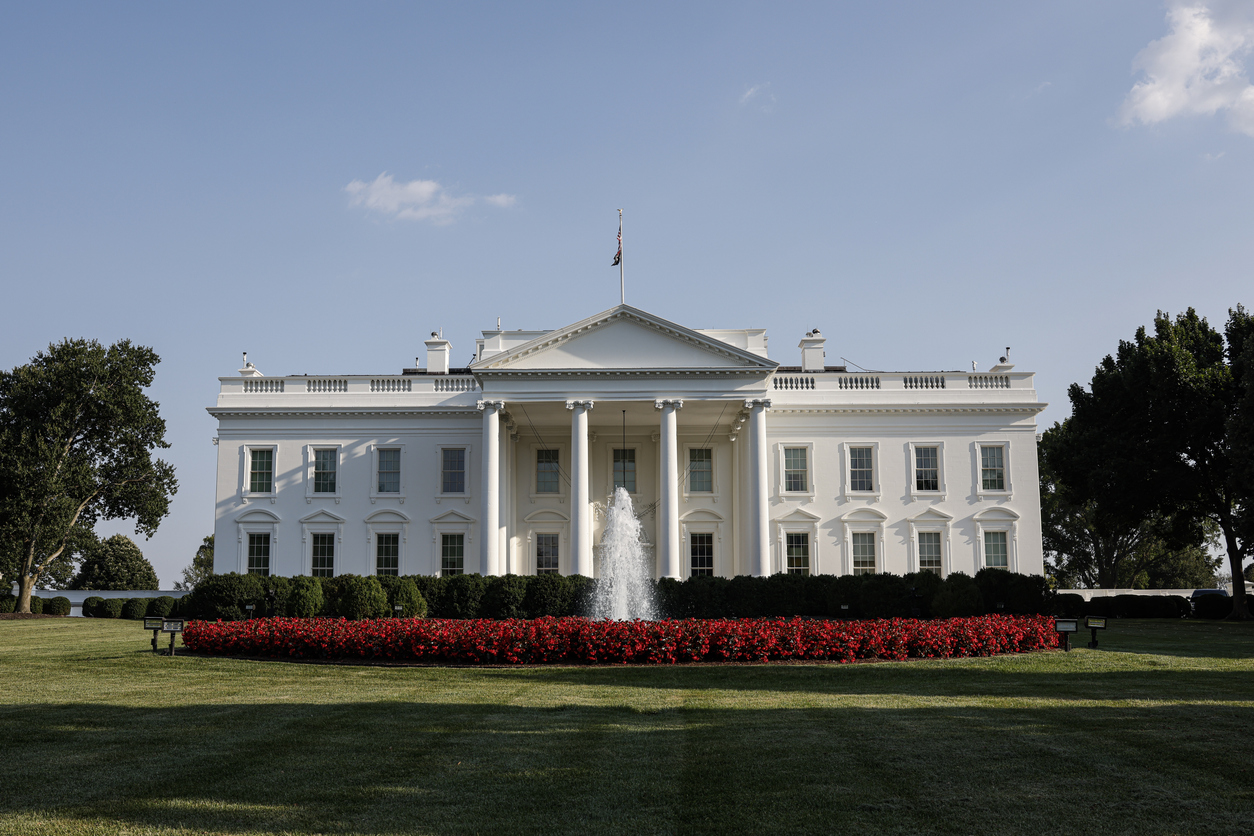
When President George W. Bush established the Office of the National Coordinator for Health Information Technology (ONC) within the Department of Health and Human Services by executive order in 2004, he set an important precedent. Each subsequent administration has continued this practice, using executive orders to guide the development and regulation of health information technology (health IT). As President Donald Trump now uses executive orders to shape health policy in his second term, it is appropriate to review how presidential actions over the past two decades have influenced the trajectory of health IT.
The Beginning
President Bush’s establishment of the ONC through Executive Order 13335 (Incentives for the Use of Health Information Technology and Establishing the Position of the National Health Information Technology Coordinator) was a response to the challenges confronting healthcare at the turn of the millennium. Following the 1999 publication of the Institute of Medicine’s landmark report, To Err is Human, policymakers and healthcare leaders were increasingly concerned with reducing medical errors and system inefficiencies. Technology was seen as a solution to the limitations of paper-based medical records. However, as individual clinics, hospitals, and healthcare systems adopted different software programs and IT solutions, a new problem emerged. A lack of interoperability left systems fragmented and unable to reliably share patient information across different care settings.
The ONC was tasked with creating a nationwide, interoperable health IT infrastructure to improve healthcare quality, reduce medical errors, and streamline patient information sharing. It was key in positioning the federal government as a central player in shaping health IT policy and laid the groundwork for subsequent federal initiatives.
Building on the Foundation: Barack Obama
President Barack Obama expanded upon Bush’s initiatives by championing legislation that would cement the federal government’s role in health IT development: the Health Information Technology for Economic and Clinical Health (HITECH) Act of 2009, part of the broader American Recovery and Reinvestment Act (ARRA).
The HITECH Act allocated nearly $30 billion in incentives to encourage hospitals and healthcare providers to adopt and demonstrate meaningful use of electronic health records (EHRs). This initiative aimed to speed the transition of the nation’s healthcare system from paper-based recordkeeping toward fully interoperable digital systems.
While the HITECH Act was the cornerstone of Obama’s health IT policy, he also employed executive orders to enhance federal oversight and accountability. In 2011, Obama issued Executive Order 13563 (Improving Regulation and Regulatory Review), emphasizing public participation and transparency in federal regulations. Although not focused on health IT, the directive reinforced principles of openness and accountability that guided the administration’s broader technology-driven healthcare reforms.
The First Trump Administration
In his first term, President Donald Trump continued the Obama administration’s emphasis on EHR, but shifted the focus toward market-driven healthcare transparency and patient empowerment. Although his executive orders were not always explicitly technology-focused, several had significant implications for the health IT landscape, particularly in promoting clearer, consumer-friendly access to healthcare pricing data and expanding telehealth capabilities.
In June 2019, Trump issued Executive Order 13877 (Improving Price and Quality Transparency in American Healthcare to Put Patients First), directing federal agencies to require hospitals and insurers to disclose clear, standardized pricing information. This order aimed to empower patients as consumers, fundamentally shifting the role of health IT toward developing systems capable of managing and displaying comprehensive price data in accessible, user-friendly formats.
In August 2020, the administration addressed disparities in healthcare access through Executive Order 13941(Improving Rural Health and Telehealth Access), which sought to expand telehealth coverage and reduce regulatory barriers. This directive accelerated the adoption of telehealth solutions, requiring enhancements in health IT infrastructure to ensure secure, reliable virtual care delivery, particularly benefiting underserved rural communities.
That same month, President Trump signed Executive Order 13944 (Ensuring Essential Medicines, Medical Countermeasures, and Critical Inputs Are Made in the United States), which focused on strengthening domestic medical supply chains. Primarily a manufacturing initiative, it also had implications for health IT systems that manage supply chain logistics, track inventory, and maintain real-time communications between healthcare providers and manufacturers.
The Biden Administration Responds to Emerging Concerns
President Joe Biden’s executive orders reflected growing concerns among the public and security experts about data security and privacy. His administration also sought to address challenges and opportunities associated with the rapid advancement of artificial intelligence (AI).
In Executive Order 14304 (Protecting Americans’ Sensitive Personal Data from Foreign Adversaries), signed in June 2021, President Biden expanded upon measures initiated by previous administrations to address the national emergency concerning the information and communications technology and services supply chain. This order specifically targeted the risks posed by certain connected software applications designed, developed, manufactured, or supplied by entities owned or controlled by, or subject to the jurisdiction of, foreign adversaries.
In October 2023, Biden signed Executive Order 14110 (Safe, Secure, and Trustworthy Development and Use of Artificial Intelligence), establishing guidelines to ensure the responsible deployment of AI across sectors, including healthcare. This directive specifically tasked HHS with creating “robust” quality control measures for AI-enabled healthcare technologies. By setting pre-market assessment and post-market oversight standards, the administration aimed to safeguard against clinical errors and biases inherent in AI systems—an acknowledgment of AI’s transformative yet potentially disruptive role in healthcare.
These orders were enhanced by Preventing Access to Americans’ Bulk Sensitive Personal Data and United States Government-Related Data by Countries of Concern, issued in February 2024. This order recognized the vulnerabilities associated with health IT systems managing genomic data and other sensitive health information. By instructing federal agencies to tighten regulations around data handling, it signaled a clear shift toward heightened protections against potential breaches or exploitation of personal health data by foreign entities.
Together, these orders demonstrated a more cautious yet forward-looking approach to health IT, prioritizing security and responsible innovation while building upon—and sometimes challenging—the foundations laid by previous administrations.
Executive Orders in the Second Trump Administration
Upon returning to office in January 2025, Donald Trump quickly began reshaping health IT policy by rescinding several Biden-era executive orders. On his first day back, President Trump signed Executive Order 14148 (Initial Rescissions of Harmful Executive Orders and Actions), reversing 78 directives issued by the previous administration, including significant health-related actions. A follow-up order, Executive Order 14236 (Additional Rescissions of Harmful Executive Orders and Actions), issued in March 2025, expanded revocations.
Among the rescissions were Biden’s Executive Order 14070 (Continuing To Strengthen Americans’ Access to Affordable, Quality Health Coverage), and key pandemic-response orders such as Executive Orders 13996 (Establishing the COVID-19 Pandemic Testing Board and Ensuring a Sustainable Public Health Workforce for COVID-19 and Other Biological Threats) and 13997 (Improving and Expanding Access to Care and Treatments for COVID-19), both of which had emphasized health IT infrastructure in supporting COVID-19 testing, data sharing, and treatment coordination. The reversal of these initiatives marked a significant pivot, indicating a preference for reduced federal oversight and a shift toward deregulation in health IT policy.
Even as he has scaled back certain regulations, President Trump is advancing health IT priorities through additional executive orders. In early February 2025, he established the Department of Government Efficiency (Executive Order 14158), to streamline federal operations, including modernizing and consolidating health IT systems. Shortly thereafter, through Executive Order 14179 (Removing Barriers to American Leadership in Artificial Intelligence), the administration indicated an interest in accelerating AI innovation and removing regulatory hurdles to foster rapid deployment of AI technologies in healthcare and other sectors. (Read Applied Policy’s summary here.)
Trump further reinforced his longstanding emphasis on consumer empowerment and healthcare transparency with Executive Order 14221 (Making America Healthy Again by Empowering Patients with Clear, Accurate, and Actionable Healthcare Pricing Information), issued in March 2025. This directive mandated stricter enforcement of previous transparency initiatives, requiring hospitals and insurers to provide clearer, more user-friendly pricing data through advanced health IT solutions.
Additional executive orders, such as that establishing the Make America Healthy Again Commission (Executive Order 14212), signaled a targeted approach to chronic disease management and preventive healthcare—areas heavily dependent upon robust health IT infrastructure for data collection and analysis. Meanwhile, Executive Order 14168 (Defending Women from Gender Ideology Extremism And Restoring Biological Truth To The Federal Government) introduced changes directly affecting how health IT systems record and manage gender-related patient data, necessitating updates to EHR systems and data protocols across healthcare settings.
These executive orders from President Trump’s second term collectively reflect a recalibrated approach: decreasing the federal regulatory control established under Biden while promoting market-driven solutions, advanced technology adoption, and enhanced transparency. As these policies take effect, healthcare organizations and technology providers will need to adapt swiftly, navigating both deregulation and changing market expectations.
